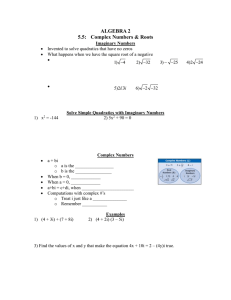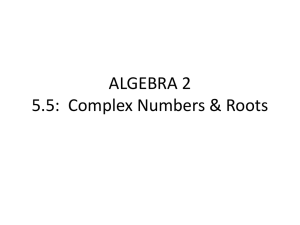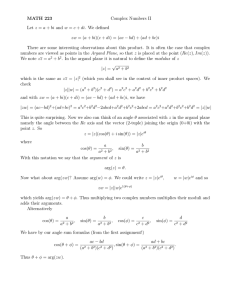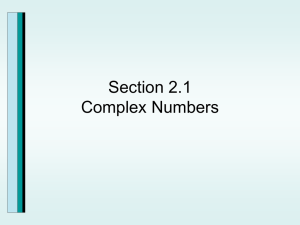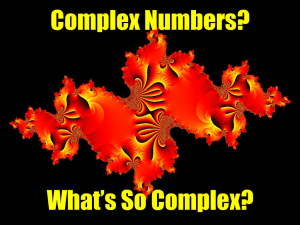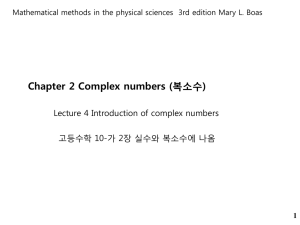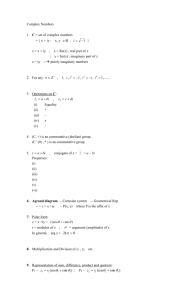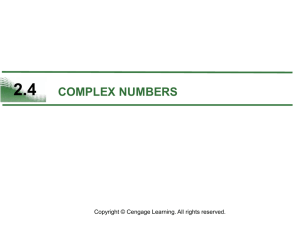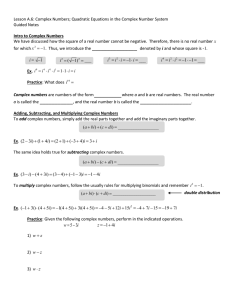Complex Numbers
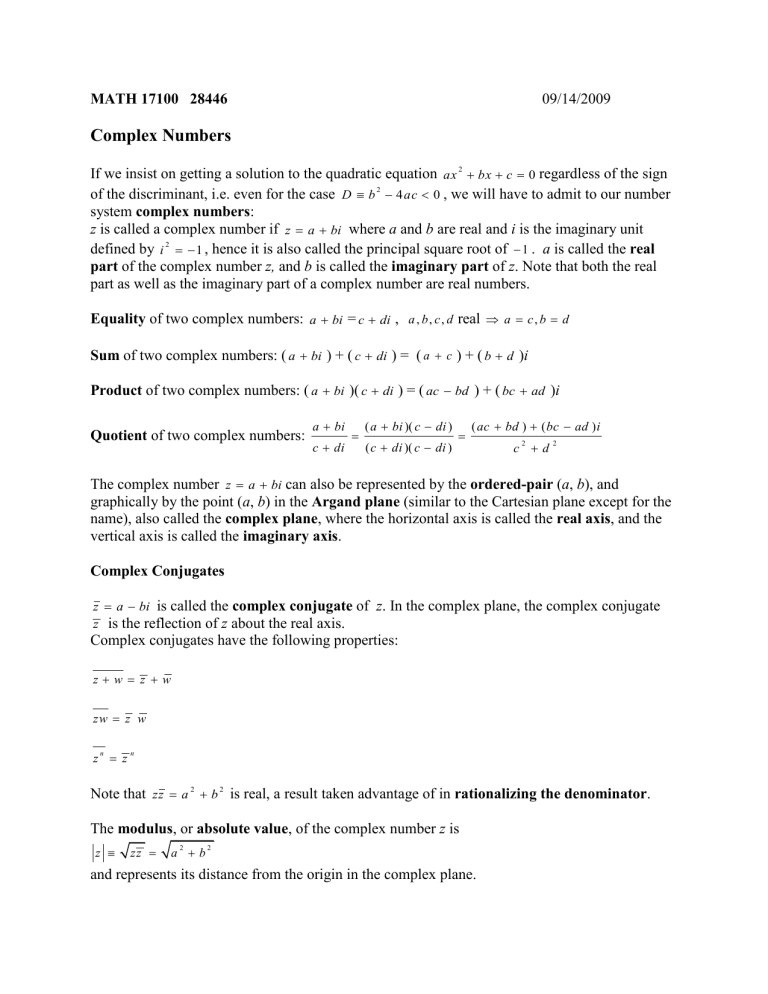
MATH 17100 28446
Complex Numbers
09/14/2009
If we insist on getting a solution to the quadratic equation ax
2 bx
0 regardless of the sign of the discriminant, i.e. even for the case D
b
2 system complex numbers : z is called a complex number if z
a
4 ac
0 , we will have to admit to our number
bi where a and b are real and i is the imaginary unit defined by i
2
1 , hence it is also called the principal square root of
1
. a is called the real part of the complex number z, and b is called the imaginary part of z . Note that both the real part as well as the imaginary part of a complex number are real numbers.
Equality of two complex numbers: a
bi = c
di , , , , real a
,
d
Sum of two complex numbers: ( a
bi ) + ( c
di
Product of two complex numbers: ( a
bi )( c
di
) = ( a
c
) = ( ac
) + ( bd b
) + ( d ) bc
i ad
Quotient of two complex numbers: a c
bi di
( a
( c
bi )( c
di )( c
di ) di )
( ac
bd ) c
2
)
( bc d
2 i
ad ) i
The complex number z
a
bi can also be represented by the ordered-pair ( a , b ), and graphically by the point ( a , b ) in the Argand plane (similar to the Cartesian plane except for the name), also called the complex plane , where the horizontal axis is called the real axis , and the vertical axis is called the imaginary axis .
Complex Conjugates z
a
bi is called the complex conjugate of z . In the complex plane, the complex conjugate z is the reflection of z about the real axis.
Complex conjugates have the following properties: z
w
z
w zw
z w z n z n
Note that z z
a
2 b
2 is real, a result taken advantage of in rationalizing the denominator .
The modulus , or absolute value , of the complex number z is z
zz
a
2 b
2 and represents its distance from the origin in the complex plane.
Polar Form
Recalling the relation between the Cartesian coordinates and polar coordinates of a given point in the plane, we extend the expression of the complex number: z x iy
r cos
ir sin
r (cos
i sin
)
re i
by
Euler’s Formula
Here r
z is the modulus of z and is called the argument of z and sometimes designated
.
While addition and subtraction is best done with the real and imaginary parts, multiplication and division is less tedious when using the polar form: z
1
r e
1 i
1 , z
2
r e
2 i
2
z z
2
i (
2
) and z
1 z
2
r
1 e i ( r
2
2
)
De Moivre’s Theorem z
re i
r (cos
i sin
) n n in z r e
r n
(cos n
i sin n
)
Roots of a complex number z
re i
r (cos
i sin
)
z
1 / n 1 / n i r e
(
2 k
) / n r
1 / n
(cos
2 k
i sin
2 k
), k
0,1, 2, , k
1 , n a natural number n n are the n roots of z . In the complex plane, these n roots are evenly distributed around the circle centered at the origin, radius r
1 / n , adjacent roots subtending an angle of
2
at the origin, the root n with k
0 being the principal root.
HW: App G # 1, 3, 5, 7, 15, 21, 25, 29, 35, 39, 43
R.Tam
